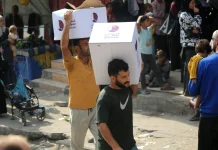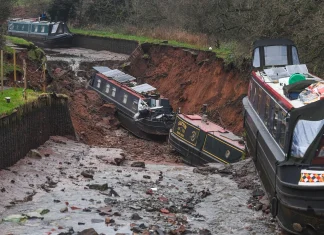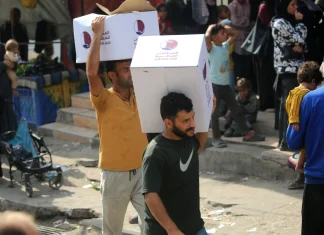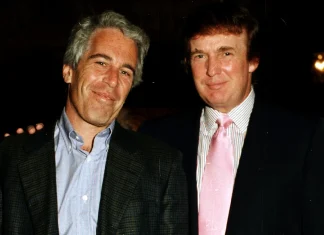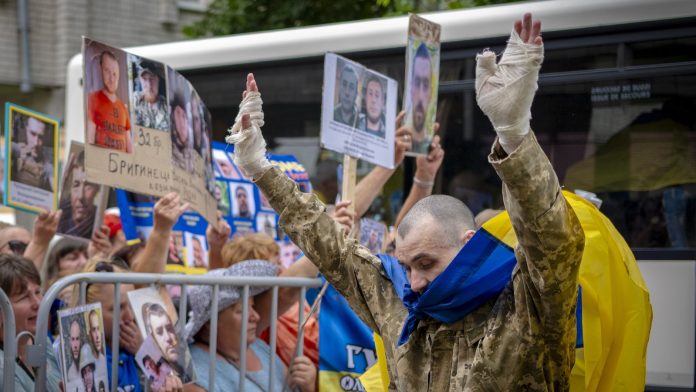
The Human Tide of War: Russia and Ukraine’s Latest Prisoner Exchange and Its Ripple Effects
War, at its rawest, is never just about soldiers and strategy. It is a ledger of shattered lives, compromised hopes, and the fragile glimmers of humanity that persist amid chaos. This week, as the world watched the looming summit between two titanic global figures—Russian President Vladimir Putin and former US President Donald Trump—something quietly profound unfolded: Russia and Ukraine exchanged 84 prisoners of war and civilians.
Though the number might read like a headline statistic, behind those digits are faces etched with trauma and resilience, families clutching onto hope, and a shared yearning across enemy lines for recognition of shared humanity.
A Lifeline Across Battle Lines
The exchange took place just before Putin and Trump’s summit in Alaska, an event shadowed by geopolitical tensions yet underscored by this rare act of conciliation. According to the Russian Defense Ministry via Telegram, the United Arab Emirates played a discreet, pivotal role as mediator. This involvement highlights how middle powers increasingly serve as quiet brokers in conflicts that dominate global headlines but defy easy solutions.
“Our people are arriving and receiving necessary psychological and medical support,” the ministry assured in its statement. One imagines what kind of toll the long captivity must have taken—years of uncertainty compounded by the brutality of war. Through thin hospital walls and bustling clinics, these returnees begin the slow, often invisible journey of healing.
Echoes of Years Past
Ukrainian President Volodymyr Zelensky took to social media to announce the exchange, noting that the 84 freed included both military personnel and civilians—some held for nearly a decade, dating back to 2014, 2016, and 2017. This staggering revelation forces one to pause. For years beyond the recent full-scale invasion, the shadow conflict simmered, imprisoning individuals caught in political crossfire long before world attention snapped sharply back in 2022.
Among those freed were defenders from Mariupol, the fiercely contested port city whose fall last year followed a grueling three-month siege. Zelensky’s photos of these soldiers—faces tired but tinged with hope, draped in the vibrant blue-and-yellow of Ukraine—offer a vivid reminder of the personal costs underpinning geopolitical chess moves.
“There will be more exchanges,” Zelensky promised, a beacon to families still waiting and a subtle reminder that cooperation remains possible even when peace is elusive.
Prisoner Swaps: A Mirror of the Conflict
These exchanges are more than acts of mercy; they are one of the few tangible fruits of ongoing diplomacy. Since May, three rounds of peace talks in Istanbul have repeatedly stalled, but the reciprocal release of prisoners stands out as a rare bridge between warring sides.
Last month, the two parties agreed on a massive swap: 1,200 POWs each. Such numbers underscore the scale of human suffering fueled by this conflict. Meanwhile, Moscow went further, proposing the return of 3,000 bodies of fallen soldiers—an offering that, while grim, speaks to deep-rooted cultural imperatives around death and dignity.
The Personal Behind the Political
In villages and cities across Ukraine and Russia, these swaps ignite ripples of emotion. I spoke with Irina, a schoolteacher in Kyiv, who lost her brother in combat last year. “Every name, every face brought home is a story retold,” she said softly. “It is as if those frozen in time somehow become part of our living, remembering. But the wound—they never truly heal.”
Across the Dnieper River, Sergei, a father in Sumy, wrestles with a different anguish. “My son is still missing. These exchanges give me hope, but also reminders of how many are lost to us.”
Shadows of War: Strikes on Ukrainian Missile Plants
While diplomacy nudged forward with prisoner swaps, the war’s brutal machinery churned relentlessly. In July, Russia’s Defense Ministry reported missile and drone strikes on critical Ukrainian weapons facilities—missile plants, weapons design bureaus, and rocket fuel production sites.
They claimed to have destroyed advanced Western missile defense systems, including Patriot launchers, in the Dnipropetrovsk and Sumy regions—key defensive bulwarks supplied by allies to shield Ukraine’s industrial heartlands.
“An attempt by Kyiv and its Western partners to produce missiles capable of striking deep within Russia was thwarted,” the ministry stated, framing these attacks as preemptive defensive measures. Such rhetoric mirrors historical narratives where wars increasingly blend kinetic action with information warfare—each side tailoring its story to bolster morale and justify actions.
What Does This Mean for Europe and Beyond?
In the shadow of these exchanges and strikes, European leaders sharpen their focus. British Prime Minister Keir Starmer scheduled a meeting with Zelensky in London as Europe braces for the implications of the Alaska summit. This confluence of events throws into relief the fragility of alliances and the complexity of the global chessboard.
The prisoner swap—and the continuing conflict—echo far beyond Ukraine’s borders, touching on broader themes:
- Human rights and war ethics: How do nations balance strategic interests with obligations to prisoners and civilians?
- Geopolitical frontlines: The role of intermediary states like the UAE testifies to changing balances of power and the emergence of new diplomatic actors.
- Information as warfare: The dual announcements of humanitarian gestures alongside military strikes demonstrate the ongoing battle for narratives.
For the ordinary global citizen reading these headlines, it raises poignant questions. When we witness prisoner exchanges or missile factories destroyed thousands of miles away, how do we reconcile the cold facts with the very human stories sewn through the fabric of war? What is our responsibility in bearing witness to suffering in distant lands?
In the Midst of Despair, Flickers of Hope
Yet, amidst destruction and disruption, these exchanges kindle a stubborn light. The sight of families reunited, faces bathed in the colors of Ukraine’s flag, gently reminds us that even in the darkest hours of conflict, compassion can carve passageways to peace.
The ongoing war between Russia and Ukraine is far from over, and the heights of diplomacy remain brittle. But in the quiet moments when prisoners step free, when flags flutter in the breeze, and when names once lost to war are spoken aloud again, we glimpse the human stories that refuse to be erased.
So, dear reader, as you reflect on these events, ask yourself: How do we, miles away, honor those caught in conflicts of geopolitics? And perhaps more urgently—how do we hold onto empathy in a world so frequently divided by it?



